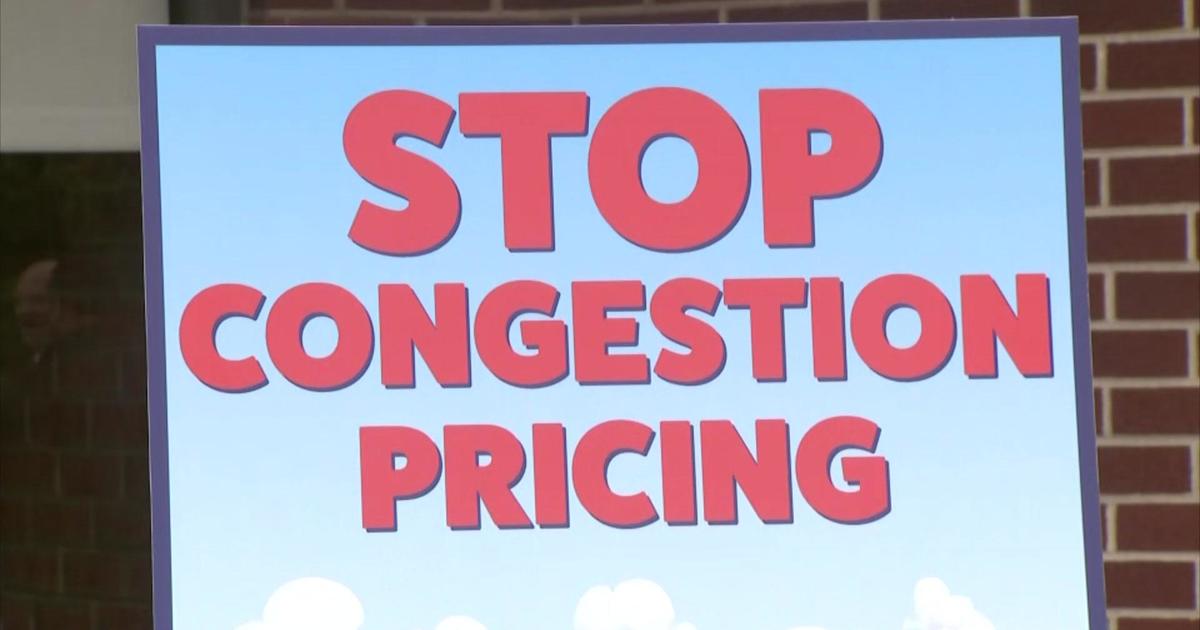Chief Medical Examiner Dr. Jason Graham explains NYC's all-hands-on-deck approach to battling the fentanyl crisis
NEW YORK -- There is now one death from fentanyl every three hours in the city.
And each borough is seeing staggering overdose numbers, especially in the Bronx. The death toll is nearly double the number of Manhattan, according to the state Department of Health.
Among those victims, a 1-year-old boy exposed to fentanyl at a Bronx daycare. It has been two months since his death shocked our community, and showed the gravity of this dangerous drug.
The city is taking an all-hands-on-deck approach to the fentanyl crisis and there's an unlikely agency on the front lines -- the Medical Examiner's Office.
CBS New York sat down with the city's chief medical examiner, Dr. Jason Graham.
READ MORE: Large-scale fentanyl packaging operation busted in the Bronx, authorities say
When asked how dire the problem is, Graham said, "From my persepctive as a medical examiner, if not for the COVID pandemic, the fentanyl crisis would represent what I believe to be the biggest public health emergency of our times."
"There is one death in this city due to fentanyl every three hours," CBS New York's Kristine Johnson pointed out.
"It's approaching that level, yes," Graham said.
That statistic from the New York City Special Narcotics Prosecutor's Office translates to 24 people dying every day from fentanyl. Graham added we are now at record levels, well in excess of 3,000 deaths in the last year.
"Fentanyl is present in 80-plus percent of the overdose deaths that we see," Graham said.
READ MORE: DEA agents seize 100 pounds of crack cocaine, fentanyl and heroin from Bronx pizzeria
"Is this drug just as dangerous to a casual drug user versus a habitual drug user?" Johnson asked.
"More so. If you are unaccustomed to using opioid drugs -- heroin, oxycodone, other types of opioid drugs -- you are in particular danger of getting a dose of fentanyl that is enough to cause your death," Graham said.
When asked what that dose looks like, Graham said, "It's an incredibly potent drug. It's 100 times more potent than morphine. It's 50 times more potent than heroin. A very tiny amount of fentanyl in someone who's opioid naive, can be potentially fatal."
The fentanyl crisis is not unique to this area. Graham said the growing number of overdose deaths have taxed medical examiner's offices across the country, as they struggle to keep up with the complex toxicology testing.
"And you've had to get new equipment, right? Just to be able to help keep track and analyze all of this data, correct?" Johnson asked.
"Yes, we've had new equipment in our lab. We've had new methods that we have developed to broaden the scope of our testing upstairs to make sure that we're missing absolutely nothing when it comes to what may have been involved in someone's death," Graham said.
Johnson asked what type of work happens in the lab.
"A lot of this instrumentation you're looking at right now is some of our newest instruments to detect those really low levels of drugs that while they are low in concentration are actually very potent and important for us to be able to detect in our casework," said Justine Pardi, assistant director of the forensic toxicology lab.
"The product of their work is this complex forensic toxicology report. What were the scene investigation findings? My autopsy findings? The toxicology results?" Graham added.
Pardi said the tissue and blood samples tested in the new machinery can pinpoint cause of death and drugs involved, but additional data from the overdose scene and location also can help lift the veil on what neighborhoods may need help and resources directed there.
"Sometimes, some of these cases, were doing five, six, seven, eight tests on one specific case, because of how many drugs are on board," Pardi said.
"So in here, you can see rows and rows of specimen. We've recently made some space in here. We have tissue samples and blood bottles listed all across there," Pardi added.
"When you're doing this work, do you ever think about the person that that sample belonged to?" Johnson asked.
"Yeah, of course we do. In some ways, you can't belabor too much on each individual case, but it's devastating to read the histories behind why we're doing some of these analyses. We just have to treat each one the same and with respect and just do our best," Pardi said.
"How do I know if someone has overdosed on fentanyl?" Johnson asked.
"It's impossible to know with certainty, but anyone who is unconscious or not breathing or snoring loudly, the benefits of administering Narcan outweigh the risks enormously. If you're not overdosing on drugs, on an opioid, Narcan is essentially harmless. Whereas if you are actively overdosing due to an opioid fentanyl, Narcan may be your only hope for survival," Graham said.
"Do you believe that Narcan and test strips should be available in all public spaces as well, just like we see defibrillators on the wall?" Johnson asked.
"I think the more access people have, generally speaking, to Narcan, to fentanyl test strips, the better. It may not be perfect, but it's giving you a chance at identifying whether or not fentanyl is in the drugs that you have and the drugs that, you know could, potentially threaten your life, if it is there," Graham said.
"Would you say the work that you're doing here at your office is crucial in the fight against fentanyl?" Johnson asked.
"Absolutely, I feel like that the work we do here is very crucial. But we're also a small part of an enormous effort on the part of the city and, really, the entire country and trying to combat this," Graham said.
On Tuesday night, CBS New York will have a discussion with some of the social workers behind what may be one of the first programs of its kind -- to assist families beyond their grief.





